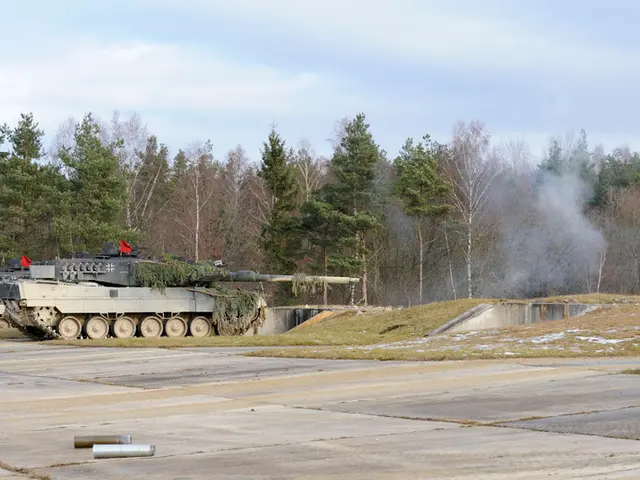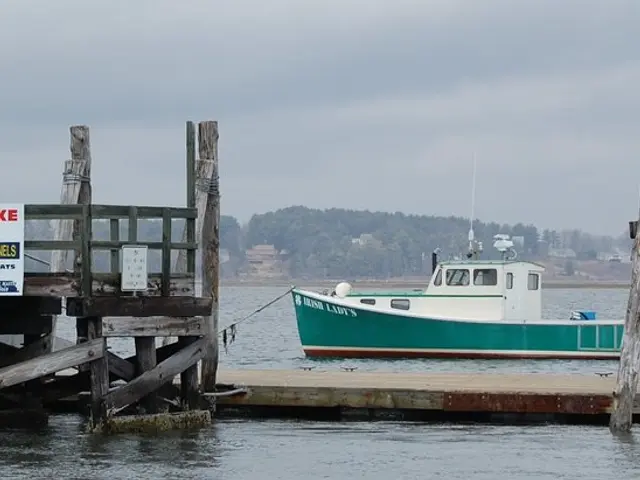Derailing The Silent Timebomb: Unveiling The Truth Behind The Garmisch-Partenkirchen Tragedy
Train collision in Garmisch 2022: Expert analysis offers insightful info
The catastrophic train derailment in Garmisch-Partenkirchen was no accident. The final report by the Federal Bureau of Railway Accident Investigation (BEU) blames inadequate maintenance management for railway sleepers and internal communication issues within the railway system. This shocking revelation was made on the third anniversary of the heart-wrenching incident.
On June 3, 2022, a regional train derailed near Garmisch-Partenkirchen, claiming the lives of four women, a 13-year-old, and injuring 78 passengers, 16 of them severely. A criminal investigation is still underway, and two railway employees face charges of negligent homicide and bodily harm.
Since the accident, Deutsche Bahn (DB) has taken several measures, including replacing more than 1.7 million sleepers, to ensure safety. DB InfraGO manages a nationwide track network of over 33,000 kilometers.
A Hidden Problem
Despite previous interim reports suggesting dilapidated railway sleepers were the primary cause of the accident, the new report reveals that internal damage caused by chemical processes in older sleepers was undetectable by visual inspection alone. This damage might have been prevented with an adapted procedure.
Problems with older sleepers were known, as they were repeatedly replaced over the years. The section of track had various prestressed concrete sleepers from different manufacturers with different production years. Yet, the report indicates that possible speed restrictions were left uncertain.
DB acknowledges the problem but emphasizes that the reasons for maintenance delays or the lack of operational measures like a speed restriction are currently under investigation.
Unheeded Call
Worse still, a lack of clear communication led to a tram driver's report about irregularities at the accident site being unheeded. The driver reported a "curve elevation," expressing concern about a "jerk" in the track. Although the duty officer responded, he failed to follow up, leading to subsequent trains passing the site without further reports being made.
The phrase "felt a blow" was missing in the report, even though the driver likely referred to track damage. The BEU suggests that the missed opportunity to forward the report to the authorities could have led to a different outcome. However, the BEU did not address possible negligence by individual employees.
Conflict Of Interest?
The employee tasked with addressing the issue faced a conflict of interest, as he was expected to prioritize the company's operational interests over safety concerns. The forwarding of the report might have led to different actions, but the BEU does not consider this directly relevant to the accident due to other factors.
Proactive Measures
DB has responded to the report by establishing a circle of internal and external experts to review preventive maintenance measures for sleepers, revising their regulations for inspecting sleepers, and tightening their criteria for fault assessment. Additionally, DB is implementing continuous training and awareness-raising measures, centralizing sleeper condition records, and making organizational and procedural changes.
Despite the ongoing tragedy, DB offers its condolences to the victims' families, reaffirming its commitment to safety and prevention. Meanwhile, damage estimates for vehicles and infrastructure stand at approximately 4.75 million euros, with the section of track remaining closed for months.
Proactive measures like enhanced inspection methods, improved materials, expert training, and transparent documentation can help prevent future accidents. It's high time for railway companies to prioritize safety, ensuring a smoother and safer journey for all passengers.
- The report on the Garmisch-Partenkirchen train derailment has revealed that undetectable internal damage caused by chemical processes in older sleepers was a hidden problem that could have been prevented with an adapted procedure.
- In the aftermath of the tragedy, it was found that a lack of clear communication led to a tram driver's report about irregularities at the accident site being unheeded, which might have had a significant impact on preventing subsequent trains from passing the site without further inspection.
- The BEU report has suggested that the employee tasked with addressing the issue faced a conflict of interest, as he was expected to prioritize the company's operational interests over safety concerns, which could potentially lead to neglectful actions in the future.








